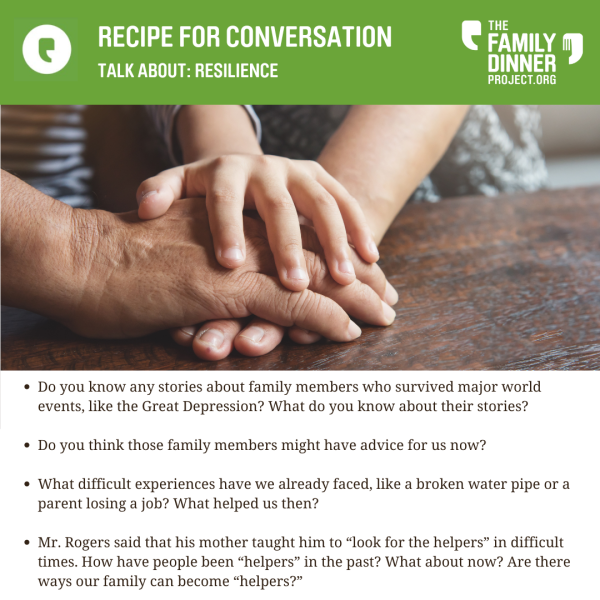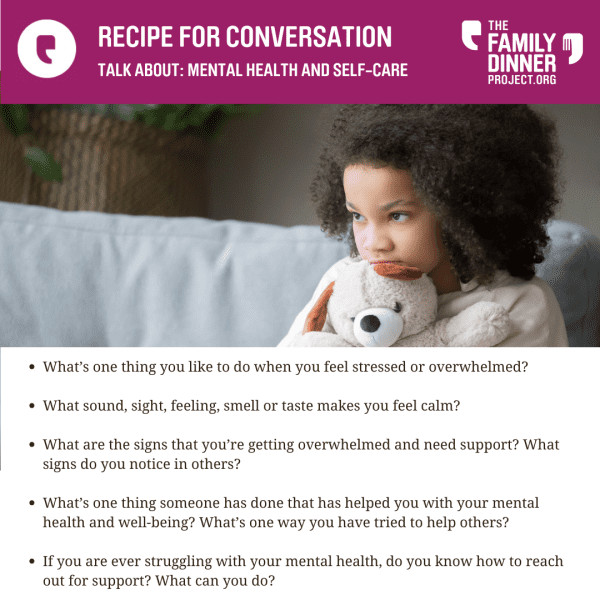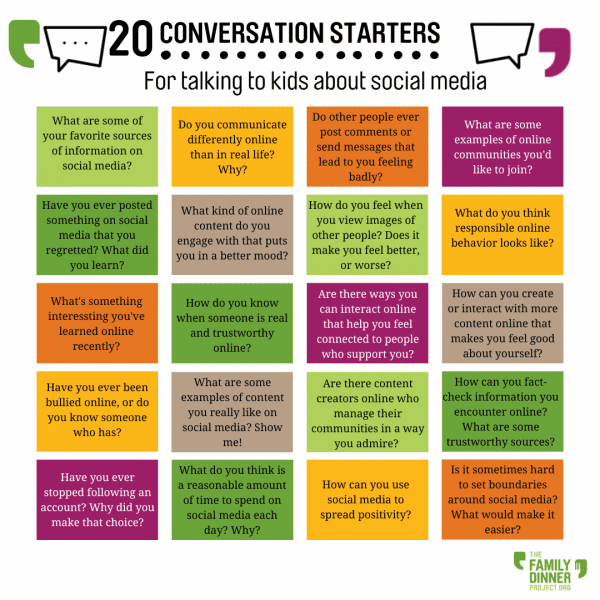
September, with its back-to-school energy, always feels like a good time to take stock of things. And we’re using that inspiration to step back and look at our work from a broader perspective. While we usually work at the family and community level, providing resources and help through our online and in-person programs, it felt like this Fall was the right time to dig into the bigger picture beyond the family dinner table. We wanted to take a look at governmental, academic, and industry research to help us determine what’s really going on with dinner, and what might lie ahead.
So this month, we’re examining the current state of the family dinner – what people are eating, how often they’re eating together, and what the current trends and challenges might be. Here are some of the highlights from the latest research and from our observations of user habits and social media posts:
- Eating together makes us happier and less stressed. Those two facts are borne out by decades of research, but most recently, by the World Happiness Study and by the American Heart Association. We discussed the World Happiness reporting in more depth in a recent newsletter and on our podcast, but the big takeaway is that people all over the world, of all ages, ethnicities, and income levels, are happier when they eat more meals with other people than when they eat alone. A 2022 American Heart Association survey demonstrated that 91% of parents notice their families are less stressed when they eat meals together, 84% of adults say they wish they could eat more meals with others, and 69% of employed adults think they would be less stressed at work if they had the time to eat with someone else.
- Families tend to start the week strong. A 2022 survey series by Morning Consult showed that people are more likely to cook at home early in the week. About 60% of households are cooking dinner on Sundays and Mondays, but by Friday night, only 50% are still cooking at home. That may or may not mean they’re eating together, however; a 2019 YouGov poll indicated that among families who said it’s challenging to eat together, 65% said the biggest obstacle was scheduling, so they may be cooking at home but eating at different times. At the same time, YouGov’s research showed that about 29% of families report eating together every night; 23% eat together 4-6 nights per week; and 16% manage 2-3 shared meals per week.
- Meal planning is in. The Food Industry Association found, in July 2022, that the majority of shoppers planned their meals in advance. They also found that those meals are getting quicker and easier to prepare: 74% of respondents said they routinely get dinner on the table in under an hour, with 30% managing it in less than half an hour most nights. A more recent small survey by OutsetAI showed that 70% of Americans who plan their meals in advance stick precisely to their plan, while the other 30% are likely to deviate only a little bit, such as switching a planned meal from one night to another. That same survey indicated that most people are planning meals in order to save time and reduce decision fatigue on busy weeknights; other top reasons included trying to eat healthier, and trying to save money.
- Costs are a (growing) concern. The Morning Consult surveys revealed that nearly two thirds of consumers say they prefer to cook at home due to affordability concerns. That seems to track with everything else we’re seeing; the USDA recently reported that food costs overall are up 3% from this time last year, and the Consumer Food Insights Report conducted in March by Purdue University’s Center for Food Demand Analysis and Sustainability showed that 84% of consumers felt grocery prices were “high,” with 18% characterizing them as “very high.” Social media chatter increasingly seems to revolve around requests for cheap meal ideas, Depression-era cooking has made a trendy comeback, and our own website analytics reveal a surprising turn toward our budget-friendly recipes since the start of 2025.
So what does it all mean for family meals this school year? Well, we don’t have a crystal ball, but we’re predicting that the rate of family dinners will either hold steady, or start to rise a bit as continued worries about food prices drive more people to cook and eat at home. We’re also betting that meal planning will become even more popular as a way to help manage that shift and keep costs in check, and old family recipes and nostalgia cooking may make a real comeback with practical, cost-conscious comfort foods helping inspire the family dinners of the near future. But whatever we eat, and however often, one constant thread throughout all the research and trends has always been the connecting power of a family meal. Our social, emotional, academic, and physical well-being are all greater when we eat together — and we don’t see that changing.
Food

If you’re among the majority of families looking to save money and waste less food, our new resource shows you how to stretch a single chicken as far as possible, including 25+ recipes to try!
How to Get the Most Out of a Roast Chicken
Fun

Focus on the positives this school year! Our Jar of Good Things is a fun family activity you can keep going until school lets out again for the summer.
Conversation
One more piece of data: The annual National Survey on Drug Use and Health recently reported that alcohol and drug use, suicide attempts, and depressive episodes among middle and high school students in the U.S. are all trending downward. That’s great news, and a good reminder that we can all do more to help kids talk about and manage their mental health. Try some of the conversation starters below to help get the ball rolling!


